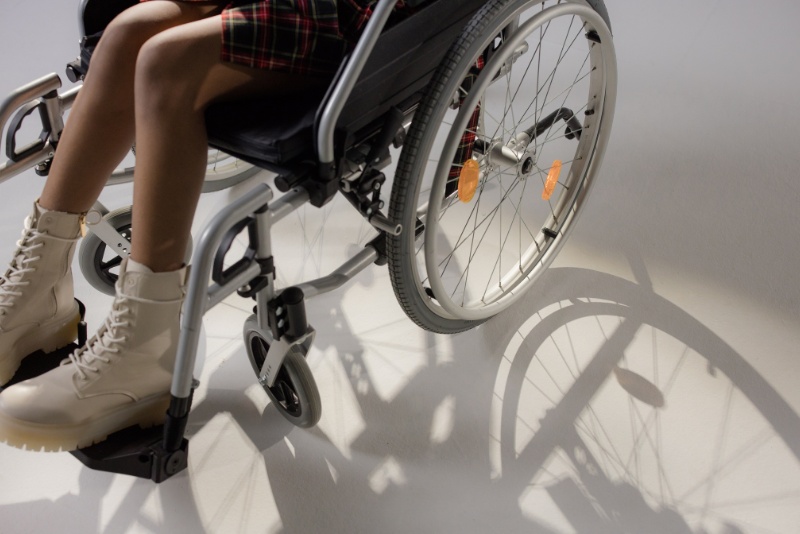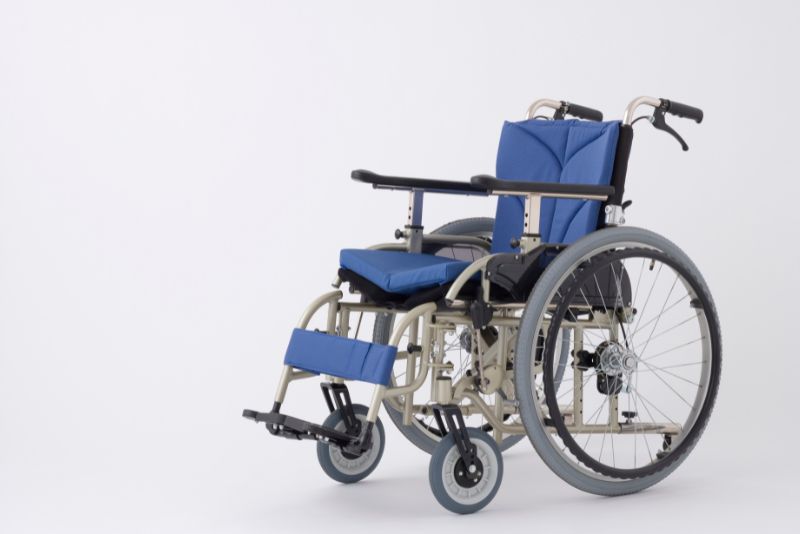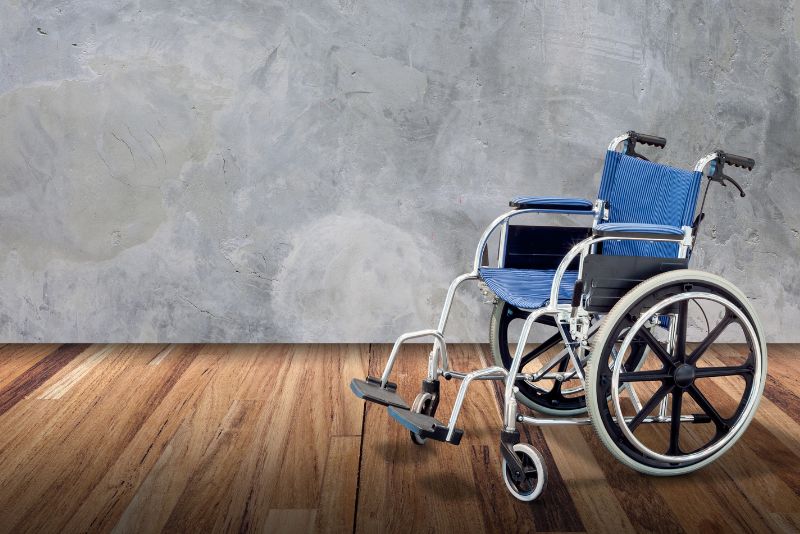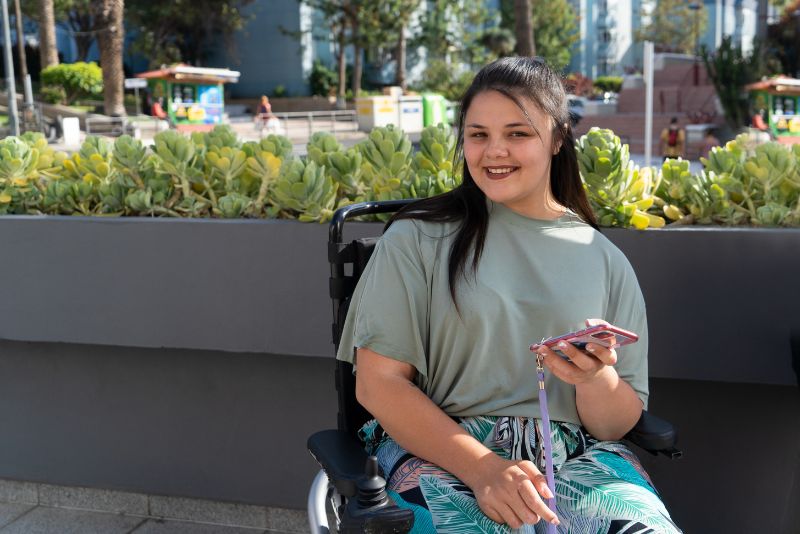For individuals who rely on wheelchairs, comfort is more than just a luxury—it’s vital for health and well-being. Yet, the threat of pressure sores can loom large, casting a shadow over daily life with risks that are as painful as they are dangerous.
We’ve spent years immersed in assistive technologies and witnessed the transformative impact of the right seat cushion on someone’s quality of life.
Understanding how to combat those persistent pressures is crucial, but with various options available, selecting the best wheelchair seat cushion requires informed insight. For instance, did you know that Vive Health’s Gel Seat Cushion has been crafted to alleviate discomfort associated with sciatica? Knowledge like this empowers choice—and it’s this level of detail we’ll delve into throughout our guide.
Stick around for essential tips and recommendations.. Your ultimate comfort awaits!
Key Takeaways
- Pressure sores can form if you sit too long without moving. Good wheelchair cushions spread your weight and stop sores.
- Cushions come in gel, foam, air, or a combination. They should fit well and be right for your weight.
- Air cushions let you change firmness to match your body’s needs. They are top for sore prevention.
- Look at how long a cushion lasts before buying it. Durable ones won’t flatten fast and save money over time.
Understanding Pressure Sores

Pressure sores, those persistent enemies of comfort and health, are more than just a nuisance—they’re a serious risk for wheelchair users. Unpacking the mysteries behind these troublesome wounds is your first line of defense; let’s delve into their causes and what you can do to keep them at bay.
Causes
Sitting or lying down too long puts pressure on your skin. This can lead to pressure sores, also known as ulcers. People get pressure sores when they are sick and cannot move much.
They happen often in wheelchairs or beds. These sore spots can start if you don’t shift your weight often.
Illness and not being able to walk increase the risk of getting pressure sores. Sick people who must stay in bed or use a wheelchair need to take extra care. They should change their position often to prevent these painful spots from forming on their skin.
Good cushions help spread out the weight and lower the risk of sores.
Prevention
Pressure sores can be painful and difficult to heal. Preventing them is crucial for wheelchair users.
- Choose the right cushion, one that redistributes pressure evenly across your body.
- Look for a cushion with good pressure relief capabilities, which will help reduce the chances of sores.
- Consider materials like gel, foam, or air; each has its benefits in preventing pressure ulcers.
- Make sure the cushion fits your wheelchair perfectly–a poor fit can lead to increased risk.
- Pick a cushion with a breathable cover to keep your skin cool and reduce moisture build-up.
- Regularly check your skin for signs of redness or irritation and adjust your position frequently.
- Avoid donut-shaped cushions as they can decrease blood flow and increase sore risk.
Factors to Consider When Choosing a Wheelchair Seat Cushion

When you’re in the market for a wheelchair seat cushion, it’s crucial to delve into the details—think beyond just softness and size. You need a cushion tailored to individual needs, ensuring it promotes pressure redistribution, offers enduring comfort, and aligns with the user’s weight and lifestyle; these are non-negotiables for those at high risk of pressure sores.
Material (gel, foam, air)
Gel cushions hug your body, reducing pressure points and helping prevent sores. They’re like a soft, comfy gel pad that takes care of your skin. Foam options are kinder to your wallet and feel pretty cozy initially, but they might get flat after some use.
Air-filled ones protect skin; they adjust to your shape and can stop sores before they start.
Think about what’s most important for you – cost, comfort or sore prevention. Gel gives you that gentle relief from pressure spots. The foam is easy on the pocket but may need replacing sooner.
And air? It’s like floating on a cloud while keeping those pesky pressure sores away.
Shape and Size
Wheelchair cushions come in many shapes to match different needs. A saddle-shaped cushion can help with stability and positioning. Pommel-shaped ones give space for thighs. Wedge-shaped cushions tilt the pelvis to prevent sliding forward.
Always check the size and height too! They must fit your wheelchair well, so you stay comfortable and supported all day.
Choose a cushion that gives you both comfort and good posture support, especially for the elderly. It should be just right in firmness – not too soft or hard. This way, your body keeps its natural shape and doesn’t get sore spots.
Look at the weight capacity as well to make sure it can support you safely without flattening out too quickly.
Weight capacity
Check the weight capacity of any wheelchair seat cushion you’re considering. It needs to support your body without compressing too much. A cushion that’s too soft will sag, and one that’s too hard can cause discomfort.
For those who are heavier, options like the Tri-Foam Bariatric Wheelchair Cushions distribute weight evenly. This helps reduce pressure and prevents the cushion from bottoming out.
It’s important to think about how the cushion’s weight also adds to your overall mobility. Heavier cushions might offer great comfort but could make it harder for you to move in a lightweight wheelchair.
If you have limited strength in your upper limbs or often move from chair to car on your own, consider a lighter option that maintains good pressure relief capabilities.
Pressure relief capabilities
Pressure relief is key in a wheelchair seat cushion. It helps stop pressure sores before they start. Cushions with good pressure relief spread out your weight evenly. This way, no single area of the body takes too much strain.
Some cushions use air cells to adjust firmness and shape to your body’s needs.
Look for cushions that can change as you move. They will give constant support and prevent skin breakdown. High-quality materials like gel or specialized foam also help by giving soft yet sturdy seating.
These materials reduce the risk of developing pressure sores, making them great for users who sit for long periods.
Comfort and support
A wheelchair cushion must do more than just fit your chair; it has to hug your body. It should cradle every curve and offer support where you need it most. Great cushions prevent pressure sores by spreading your weight evenly.
They help maintain good posture, which guards against back pain and discomfort.
Cushions come in high-resilience foam, gel, or a mix of both – each ready to keep you cozy day in and out. Whether reading at home or rolling through town, the right cushion feels like a trusted friend for your bottom and back.
Look for options that blend softness with firmness to enjoy top-notch comfort without sacrificing vital support.
Types of Wheelchair Seat Cushions

Diving into the heart of comfort and care, we explore the spectrum of wheelchair seat cushions—each designed to cater to unique needs and ensure optimal protection against pressure sores.
From the soothing embrace of gel to the firm support of foam, and the customizable contours of air cushions, your path to finding ultimate relief starts here.
Gel
Gel cushions keep your body cool and stop moisture from building up, which is great for long hours in a wheelchair. They’re top-notch for preventing pressure sores because they spread out your weight evenly.
With an AUVON Gel Wheelchair Seat Cushion, you get comfort that tackles sciatica, back issues, and soreness right at the source. These gel cushions really take on the challenge of reducing pressure sore risks.
They adapt to your shape and give firm support without letting you sink in too much. Comfort meets smart design – gel helps distribute pressure away from high-risk areas like tailbones and hips.
Since staying put matters, these cushions often come with non-slip covers to ensure everything stays where it should be while you move around freely.
Foam
Foam wheelchair cushions are a popular choice for comfort and prevention of pressure sores. They offer sturdy support and can help distribute your weight evenly. This helps reduce the risk of skin breakdown and aids in ulcer prevention.
These cushions come in different types, like memory foam that molds to your body’s shape.
Many users find foam cushions easy to use because they’re lightweight and don’t require pumping up like air cushions. They fit well into daily life, making them a practical option for many people in wheelchairs.
Plus, they are less expensive than other types, making them great if you’re watching your budget but still want quality pressure sore relief.
Air cushions
Air cushions are great for preventing pressure sores. They use air cells to distribute your weight evenly. This helps stop sores before they start. Plus, air cushions can boost your posture too.
These inflatable wheelchair cushions let you adjust the firmness. You can make them as soft or as hard as you like. That’s perfect for all-day comfort and skin protection! Choose an air cushion, and feel its difference in keeping your skin healthy and sore-free.
Combination cushions
Combination cushions bring together the best of different materials. For example, they may have layers of gel on top of foam or air cells. This mix can offer more pressure relief and comfort than single-material options.
Users get multiple benefits in one cushion, like foam support and gel cooling effects.
These versatile cushions adapt to your body’s needs. They give a balance between softness and firm support to prevent pressure sores. You’ll find them great for long hours in your wheelchair because they distribute weight evenly.
Plus, they can help with posture control too! Combination cushions often suit many people with their unique blend of features.
Top Considerations for Choosing the Best Wheelchair Seat Cushion

When searching for that perfect wheelchair seat cushion, key factors like pressure redistribution and breathability rise to the forefront; dive in further to discover how these elements combine to craft a seat solution that not only cradles you in comfort but also shields your skin from the perils of pressure sores—continue reading for insights into making an empowering choice.
Pressure redistribution
Pressure redistribution is key for a wheelchair seat cushion. It helps spread your weight evenly across the cushion. This can stop pressure sores from forming on your skin. Good cushions shift pressure away from high-risk areas like hips and tailbones.
They use materials like air, gel, or foam to protect your skin.
Air cushions are often the best choice for this job. They let you adjust how firm they are, so you always get the right support. These cushions adapt to your body’s shape and movements with air cells that can inflate or deflate.
Choose an air cushion to help keep pressure off vulnerable spots and ensure day-long comfort in your wheelchair.
Breathability
Breathability is key for a wheelchair seat cushion. It helps keep your skin cool and dry. Look for cushions with castellated cells to create a microclimate. This design allows air to flow, preventing moisture buildup that can lead to sores.
Cooler conditions mean less risk of skin breakdown. When you are sitting for long periods, the right cushion lets your skin breathe. Gel and foam cushions might do the trick, but consider their breathability features carefully.
Your comfort depends on it!
Durability
Choosing a durable wheelchair seat cushion is crucial. You want one that can handle daily use without falling apart. The best cushions are made with materials that last, even under lots of pressure and movement.
A tough cushion saves you money because it won’t need replacing often. Look for quality stitching, strong fabric covers, and resistance to wear and tear.
Strong cushions support your body while keeping their shape over time. They help prevent skin breakdown from sitting too long in the same spot. Such cushions offer comfort and peace of mind—you know they’ll stand up to whatever comes their way! Always check customer reviews about how well a cushion holds up before choosing.
Top Recommended Wheelchair Seat Cushions
Navigating the myriad of options for wheelchair seat cushions may seem daunting, but we’ve sifted through the noise to bring you our top picks designed to offer unrivaled pressure sore prevention.
These game-changing cushions are not just placeholders on your chair; they’re scientifically engineered allies in your quest for comfort and skin health—each one with a proven track record of safeguarding against ulcers and enhancing the overall sitting experience.
Drive Medical 14886 Skin Protection Gel “E” Cushion
The Drive Medical 14886 Skin Protection Gel “E” Cushion provides a haven for your skin. Its gel bladder is nestled within a cozy 3-inch foam cushion. This design helps spread out pressure, keeping sensitive areas free from sores.
Perfect for those who spend lots of time in their wheelchair, this cushion offers both relief and peace of mind.
Your comfort matters, and Drive Medical knows it. With this cushion, you get the bonus of support that contours to your body’s shape. It’s built for people at high risk of skin breakdown due to prolonged sitting.
Users find a much-improved seating experience that takes care to prevent pressure ulcers before they start.
Essential Medical Supply Rehab 1 Foam Cushion
Look no further than the Essential Medical Supply Rehab 1 Foam Cushion for a comfortable, pressure-relieving seat. This cushion measures 18 inches by 16 inches by 3 inches, just the right size for any chair or wheelchair.
Made from high-density polyurethane foam, it’s tough enough to handle daily use yet soft enough to prevent pressure sores.
This foam cushion isn’t only about comfort; it comes with a soft black cotton cover that zips off easily. Clean-up is a breeze since both the cover and the cushion are washable. Users love how this cushion maintains its shape, providing consistent support and pressure relief over time.
Say goodbye to discomfort with this top-recommended choice that enhances mobility and reduces pain during long periods of sitting.
ROHO MOSAIC Cushion
The ROHO MOSAIC Cushion is all about comfort and pressure relief. Users will appreciate sinking into the cushion as it molds to their body’s unique shape. This helps prevent pressure sores by promoting blood circulation where needed most.
With six sizes available, there’s a perfect fit for everyone.
This lightweight cushion isn’t just comfy – it’s practical too. It features large interconnected air cells that work together to distribute weight and reduce friction on sensitive skin areas evenly.
Setting up the ROHO MOSAIC is a breeze, making life easier for wheelchair users looking to avoid troublesome pressure ulcers. Plus, data shows severe pressure injuries often improve with these cushions, offering immediate relief and ongoing protection against skin breakdown.
Karman Deluxe Foam Cushion
With its quality design, the Karman Deluxe Foam Cushion steps up to combat pressure sores. Durable, high-grade foam fits any wheelchair, offering comfort that lasts. It supports good posture and helps reduce the risk of skin breakdown.
Users find their daily routines more enjoyable because this cushion delivers both relief and stability.
Expect a big change in your sitting experience with the Karman Deluxe Foam Cushion. Wheelchair users celebrate the valued blend of ease and preventative care it provides. Make every sit-down moment one step away from pressure sores and a leap toward better health with this top-choice seat addition.
Drive Medical Titanium Gel/Foam Wheelchair Cushion
Drive Medical offers a top-notch wheelchair cushion with its Titanium Gel/Foam model. This cushion combines a foam layer with a dual-chamber gel, providing unmatched pressure redistribution and positioning.
Its design includes a polyurethane foam shell that is fire retardant for added safety.
Users find peace of mind with the removable cover, which is water-resistant on top and has a non-slip vinyl base to prevent accidents. It’s also antimicrobial, fights odors, and you can easily clean it.
Lightweight yet durable, this wheelchair cushion supports proper seating posture thanks to the central dual-chambered gel bladder. It is highly recommended for those who need to prevent pressure sores and want to protect their skin while using a wheelchair.
Conclusion
A good wheelchair cushion can make a big difference. It keeps your skin safe and stops pressure sores. A sore happens when you sit in one spot too long. To stop them, pick the right seat pad.
When looking for a cushion, think about what it’s made of. You have gel, foam, or air options. Make sure it fits your chair well and holds your weight. The best ones lower pressure and feel comfy.
There are different kinds of cushions to choose from:
1. Gel cushions support you softly.
2. Foam pads are firm but comfy.
3. Air cushions let you adjust firmness.
4. Combo pads mix materials for extra care.
Choose one that spreads out pressure evenly for best results.






